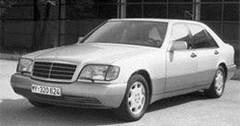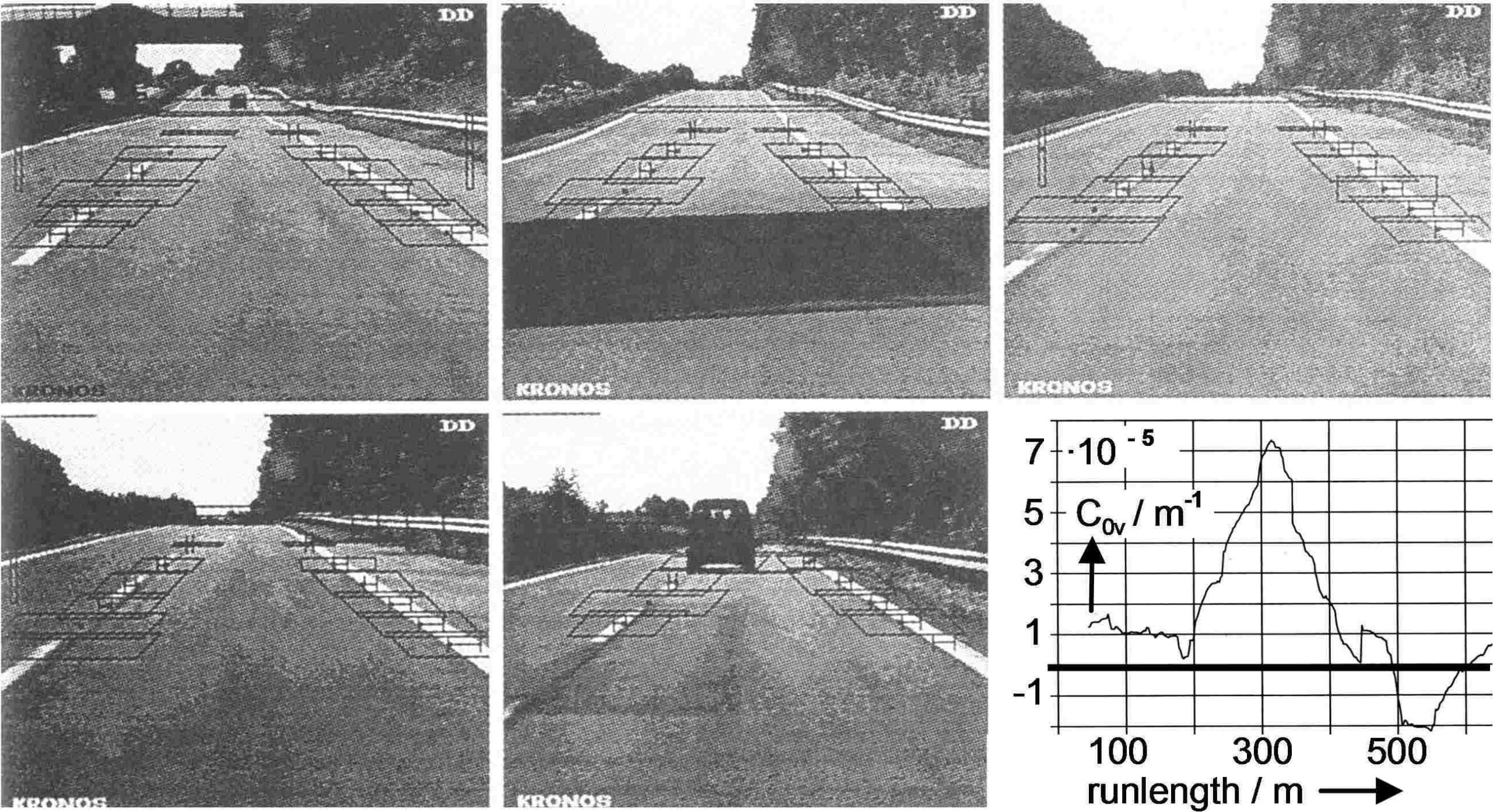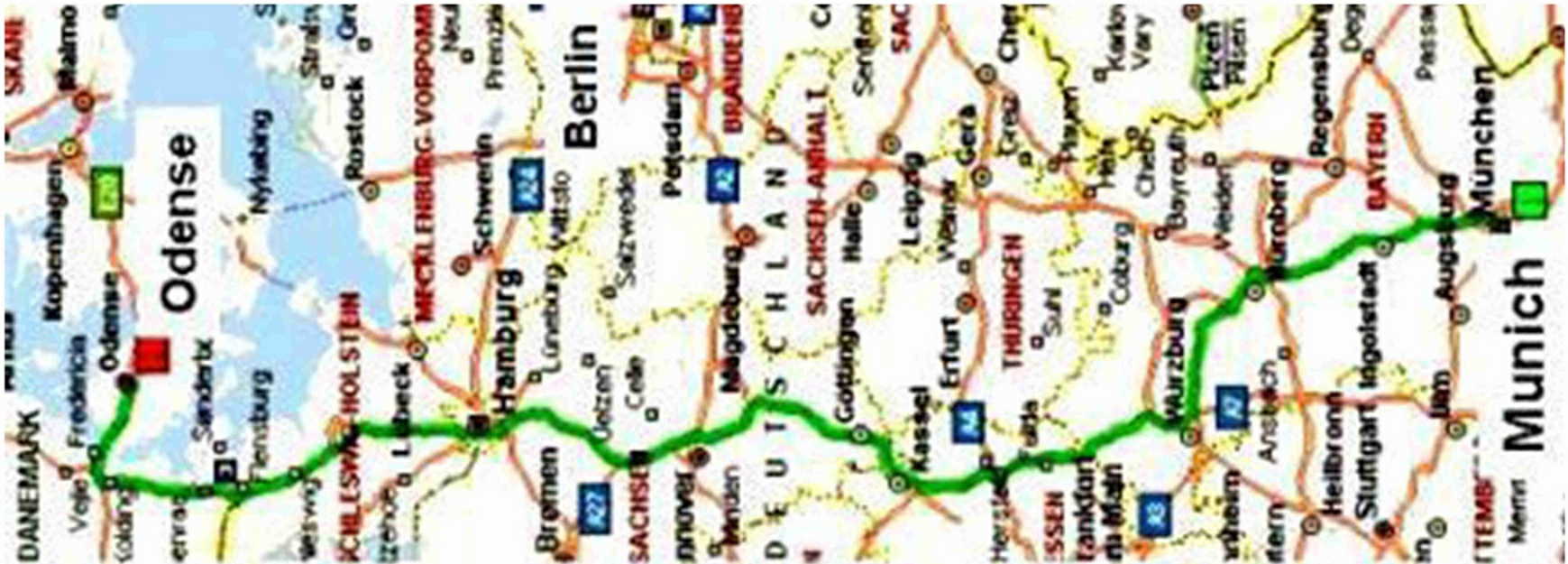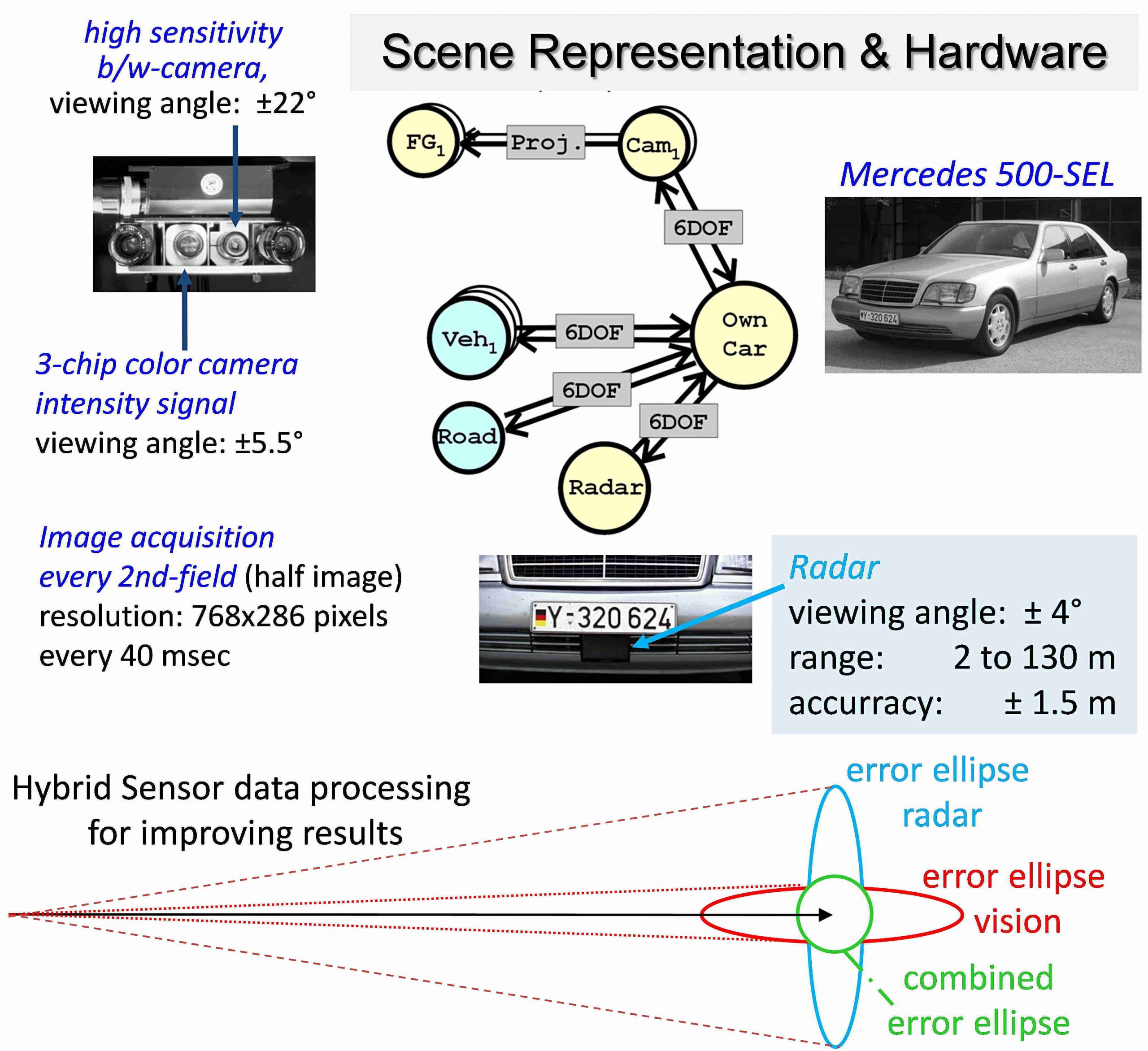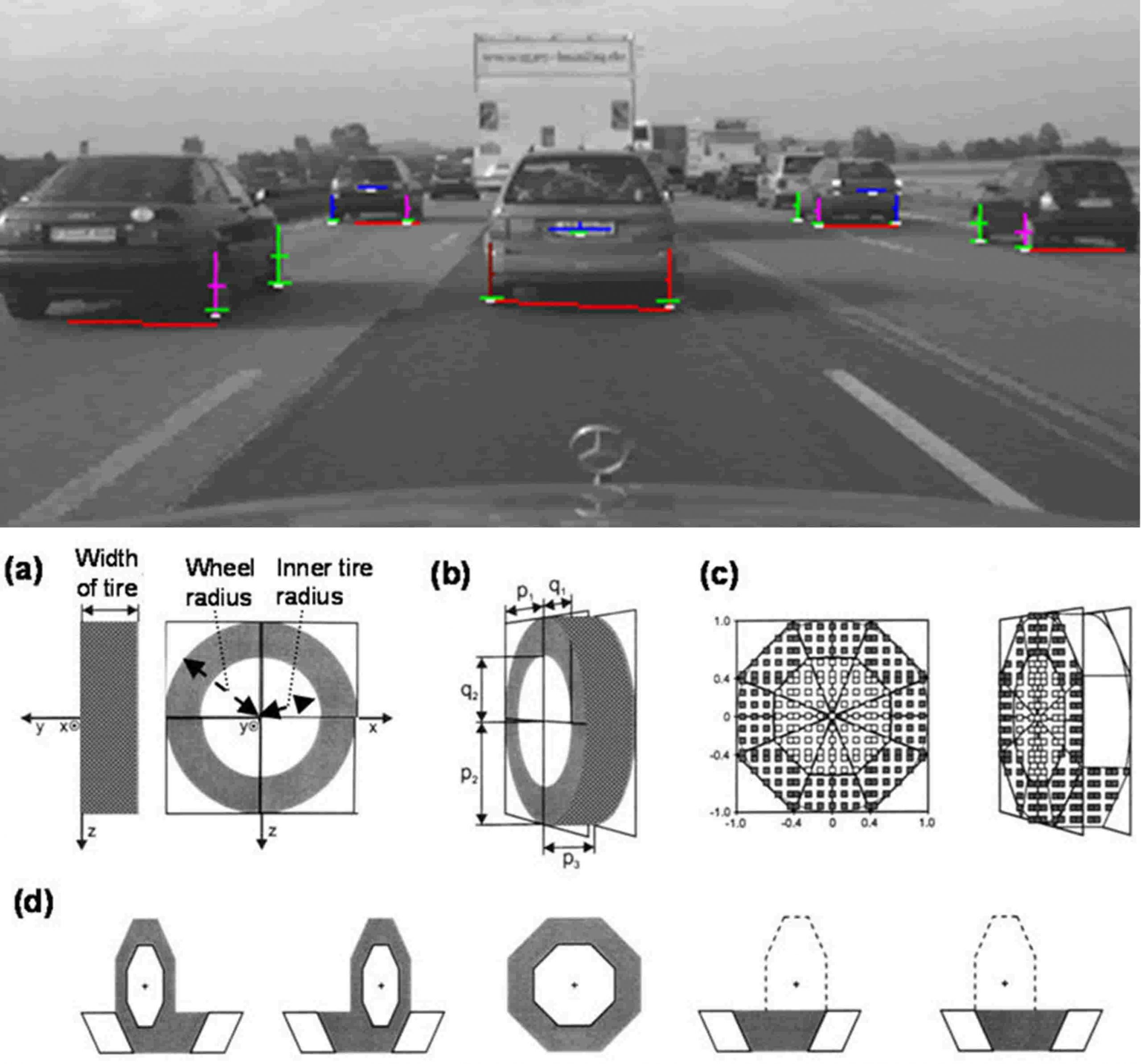Test vehicle ‘Prometheus’-project (SEL 500)
- 2nd– generation transputer vision system with up to 60 processors;
- bifocal vision both to the front and to the rear;
- autonomous lane change decisions (two lanes).
Video – TwofoldAutonLaneChangeParis 1994
High-speed road running , 1995: Up to 180 km/h
- Curvature-based perception of own and neighboring lanes;
- lateral ego-state including transition between lanes.
- Large look-ahead ranges (bi-focal) up to ~ 100 m
Convoy-driving on multi-lane highways, 1994
- Monocular motion stereo with flat ground assumption,
- vehicle width initially estimated (parameter adaptation),
- then fixed for better monocular range estimation.
Long distance drive from Munich to Odense, 1995
A.3.8 Long distance drive VaMP 1995
- Transputer system with Power-PC 601 processors (front hemisphere);
- collect statistical data on edge-based vision system performance to derive improvements required of the 3rd-generation system based on COTS-components with much higher computing power.
Horizontal and vertical road curvature, 1999
- At larger ranges, even small vertical curvatures are important for higher precision in monocular range estimation;
- the yellow bars display curvature effects relative to the horizon line.
Hybrid Adaptive Cruise Control
- Bifocal vision complementing an industrial radar system for more robust distance keeping, early version of EMS-vision system;
- longitudinal control fully autonomous, lateral control by human driver to keep him ‘in the loop’ for achieving better attention.
